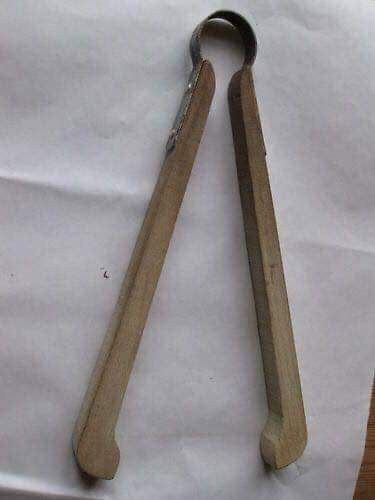In the days before automated washing machines and dryers, laundry day was a labor-intensive affair. Imagine yourself standing over a steaming cauldron of boiling water, carefully stirring and lifting heavy garments with a simple yet ingenious tool – the wooden laundry tongs. These unassuming tongs, with their smooth wooden handles and sturdy metal spring, were a lifeline for housewives and laundresses throughout the 19th and early 20th centuries.

The purpose of these tongs was twofold. Firstly, they allowed the user to safely maneuver scalding hot laundry without risking burns. The long handles provided a comfortable distance from the heat, while the wooden grips ensured a firm grasp on slippery fabrics. Secondly, the tongs facilitated the removal of excess water from the laundry, making the drying process more efficient. The spring mechanism allowed for easy opening and closing, enabling the user to wring out garments with minimal effort.

Wooden laundry tongs were not only practical but also a testament to the resourcefulness of people in the past. They were often crafted from readily available materials, such as scraps of wood and salvaged metal. Their simple yet effective design ensured their longevity, with many surviving to this day as cherished heirlooms or curious antiques. While these tongs may seem like relics of a bygone era, they remind us of the ingenuity and resilience of our ancestors, who found ways to make even the most mundane tasks more manageable.
These wooden laundry tongs were most commonly used in the late 19th and early 20th centuries, particularly during the pre-war and post-war eras when modern conveniences were not yet widespread. Their popularity declined as electric washing machines and dryers became more accessible, but they remain a fascinating symbol of a time when laundry day was a community affair, often shared by neighbors and friends.
